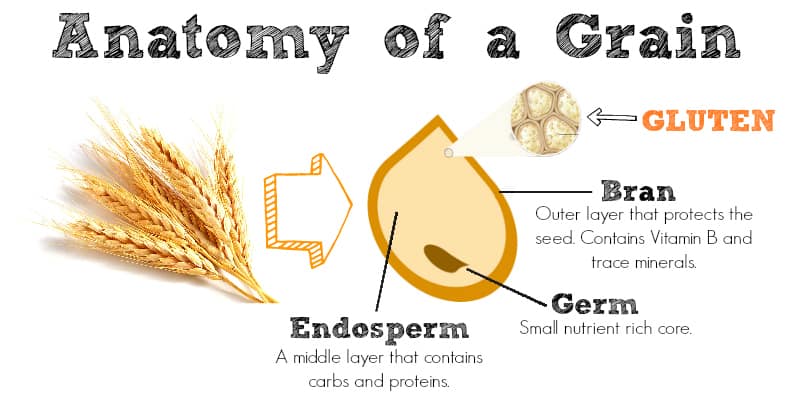Gluten Free Resources
Gluten Free Facts
What is Gluten?

Gluten is a protein found in wheat. It’s also found in rye and barley but in much smaller quantities. You can see from the grain diagram below that gluten is found in the endosperm, the middle layer that contains carbs and proteins.
When baking, gluten impacts the elasticity of the dough and affects the final result of your baked goods. For example, yeast-raising doughs rely on gluten in a big way for structure.
What’s the problem with gluten?
For the majority of people gluten isn’t a problem and it can be digested without issue. However, it can be a major problem for a coeliac. In Australia, around 3% of people have coeliac disease – which causes small bowel damage to those that consume gluten. There is currently no cure for coeliac disease and so those who are diagnosed with this disease need to completely cut our gluten from their diet.
How do I avoid eating gluten?
For those new to gluten intolerance it can seem overwhelming when you try to work out what you can and can’t eat. Thankfully, there are a wide range of resources online to help you out – check out http://www.healthdirect.gov.au/gluten-free-diet for lots of resources on the topis of coeliac disease. Also, searching for gluten free recipes will produce a wealth of ideas for your new eating plan.
Some examples of gluten free food include:
· Fruit and vegetables.
· Healthy fat such as extra virgin olive oil, sesame oil, coconut oil and seeds.
· Protein from eggs, fish, grass-fed meat, poultry, and pork.
· Non-gluten flour: buckwheat, rice flour, millet flour, quinoa flour, sorghum flour, teff flour.
· Cow’s milk and cream, yogurt.
· Natural stevia and chocolate
There are also a range of gluten free products that you can purchase. Well and Good produce a range of flours, cake, bread and biscuit mixes that look and taste like the foods you’re used to. Visit our shop now to view our range.


